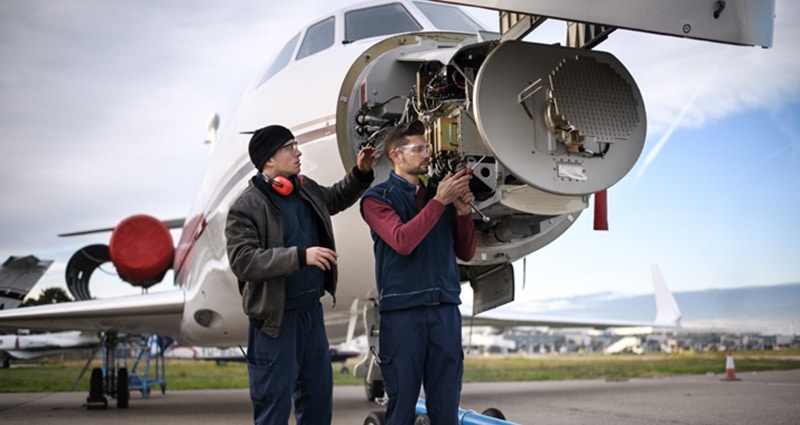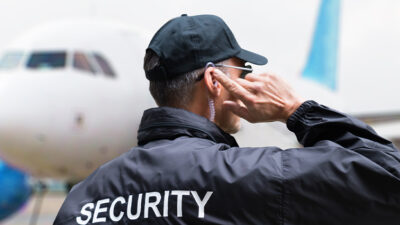Evaluating Safety When Selecting Air Charters

“When travelers arrange an on-demand charter flight, they do so believing the flight will be safe. They implicitly trust that FAA standards, the charter company Standard Operating Procedures, and the professionalism of the pilots will protect them from harm. They have a right to believe that these protections are practiced on every flight, without exception, so they can be sure that such protections apply to their flight.”
-Comments from former NTSB Chairman Christopher A. Hart
Aircraft owners and corporate flight departments frequently exercise an important option in air travel—the use supplemental lift and charter flights to fill gaps in their own aircraft availability. Perhaps their aircraft are unavailable due to maintenance, capacity demands, or trip duration. Such cases are common examples of what may prompt an owner/operator to seek supplemental lift for their flight operation. Without this option, business leaders may have to rely on the commercial airlines and risk delays, longer travel days for connections, and time-consuming processes at the airport.
Business travelers seek the efficiency gained from time and convenience, and an economical quote for the trip, but never at the expense of safety. While value and price are relatively easy to asses, measuring a charter company’s level of safety before agreeing to a flight is not always so easy. Arguably, there are many visual ways to review a charter company’s statements and representations regarding safety. Typically, websites contain written testaments about their safety culture, and icons that represent their standing in terms of different audits and safety programs in which they participate. Visual representations might be a starting point, but how does a business traveler go beyond the marketing visuals? Put differently, how can a consumer achieve confidence and trust in the charter operator’s safety culture, and in the quality of the aircraft and the professionalism of the flight crew? The business aviation industry is becoming increasingly focused on this very question.
Two important developments concerning air charter safety took place over the last 12 months. The National Air Transport Association (NATA) held several regional Air Charter Town Hall Meetings with Part 135 charter and aircraft-management companies. These meetings were highlighted in an October 30, 2017 article of The Weekly of Business Aviation, and Bill Deere, NATA executive vice president, noted the following areas of inquiry as possible solutions for consumers:1
- Require an operator to provide an air carrier certificate number and a telephone number of the FAA inspector responsible for overseeing their operations.
- Ask for documentation showing the operator is authorized to fly the aircraft in a commercial operation.
- Travelers should exercise their right to contact an FAA office to request verification. The phone number of the proper office for each state can be found at https://www.faa.gov/about/office_org/field_offices/fsdo.
Another important industry event took place at the recent National Business Aviation Association (NBAA) 2018 Schedulers and Dispatchers Conference. A panel presentation entitled “Vetting Your Supplemental Lift” brought together several industry subject matter experts including Global Aerospace and SM4 partners:
Don Chupp, President and CEO of Fireside Partners
Frank Turtola, Senior Vice President – Underwriting Executive at Global Aerospace
Terry Lascher, Director of Operations at L.J. Aviation
Nick DeMarco, Audit Program Manager, Standards from Executive Jet Management
This panel identified several evaluative factors for assessing air charter safety as well, including evaluating the training qualifications of the crews, flying on well-maintained and well-documented aircraft, and carefully reviewing standard operating procedures (SOPs), Safety Management Systems (SMS), and the existence and sufficiency of an Emergency Response Plan (ERP).2
During the course of the discussion, Mr. Turtola further advised consumers to ask for verification of the type and limits of insurance coverage carried by the operator and a side-by-side comparison with one’s own coverages. Additionally, most insurance companies require annual simulator-based emergency procedures training in addition to annual currency requirements. Beyond simulator training, charter operators could go even further and require pilots to receive specialized emergency/survival training, emergency evacuation training, automatic defibrillator training, airborne meteorological hazard training, or other specialized safety training.
Large aviation companies have a risk management department and a legal department to provide counsel and oversight. Smaller flight operations may handle insurance matters in house. Travelers should evaluate their own company’s risks and requirements for liability insurance, and compare them to the supplemental lift operator’s coverage.
The “Vetting Your Supplemental Lift” panel received very high marks at the NBAA 2018 Schedulers and Dispatchers Conference, underscoring the importance and industry attention placed on the subject of air charter and supplemental lift safety.
Naturally, the examination of air charter safety extends to the validity and reliability of industry audits. FAA standards establish the minimum operating standards in the private aviation industry, and commercial/independent audits exist to provide further evaluative tools. There are four industry standards that are widely utilized by Part 91 and 135 flight operations: the IS-BAO standard, various ARG/US ratings, the Wyvern Standard, and the ACSF Industry Audit Standard.
IS-BAO, the “International Standard for Business Aircraft Operations,” introduced by the International Business Aviation Council (IBAC), has been widely accepted as a benchmark for business aircraft operations. IS-BAO is endorsed by the NBAA as well as multinational organizations industry wide.
ARGUS International (ARGUS) rates operators based on information provided by the operators and by the FAA in evaluating aircrew experience and training. The evaluation includes pilot certificates, aircraft registration, operating certificates, review of accidents and incidents, and aircraft ownership. This information is then provided in a TripCHEQ report (Trip Charter Evaluation and Qualification program). Using this information, ARGUS assigns each operator a 4-Tier safety rating: Do not qualify (DNQ), Gold, Gold+, and Platinum.
Wyvern uses their own standard, evaluating safety benchmarks including minimum flight hour experience requirements for pilots. The report is called the PASS (Pilot and Aircraft Safety Survey). Consumers can use the Wyvern standard or customize their own standard based on a flight department’s needs and an evaluation of requirements for each flight.
The Air Charter Safety Foundation’s (ACSF) industry audit standard applies to both charter companies and fractional programs. The goal of ACSF is to be an independent standard for the private jet travel industry.
Travelers should be well educated on the validity and reliability of industry audits, and if or how they actually correlate to safety. Certainly, this subject has the attention of the National Transportation Safety Board, and is discussed in recent accident reports and industry publications.
In summary, the mission is clear—find an air charter or supplemental lift provider that takes their investment in safety and service as seriously and comprehensively as you do. Evaluate the full scope of flight operations, including industry standards, pilot training, comprehensive SMS, ERP, SOPs, and liability insurance with just as critical an eye as you do your own operation. In the end, determine if you are willing to forego any level of safety and tolerate any degree of increased risk, and prepare to defend that decision if something unfortunate were to occur.
Resources
1 NTSB Board Meeting: Crash During Non-Precision Instrument Approach to Landing, Akron, OH; Opening Statement
2 Fireside Partners notes that a written “Plan” is only a portion of a well-developed and resourced Emergency Response Program
 Fireside Partners Inc.
Fireside Partners Inc.Fireside Partners, Inc., is a fully integrated emergency services provider designed to provide all services and resources required to respond effectively and compassionately in a crisis situation. Dedicated to building world-class emergency response programs (ERP), Fireside instills confidence, resiliency and readiness for high-net worth and high-visibility individuals and businesses. Fireside provides a broad array of services focused on prevention and on-site support to help customers protect their most important assets: their people and their good name.
http://www.firesideteam.com/
© 2025 Fireside Partners Inc.. All Rights Reserved.
Next ArticleRelated Posts

Emerging Security Threats in Business Aviation: Activism and Down-Route Risks
Security incidents affecting business aviation do not need to involve violence to have an operational impact. A protest delaying crew movements, blocking access to a hangar or resulting in an unauthorized photograph of a sensitive client can all trigger reputational, financial or compliance concerns for operators.

Little Things Matter: The Lost Key of the Titanic
Ultimately, the story of the Titanic’s lost key is a call to action for aviation professionals. It underscores the need for unwavering attention to detail, robust systems to catch human error and a culture that prioritizes safety over haste.

